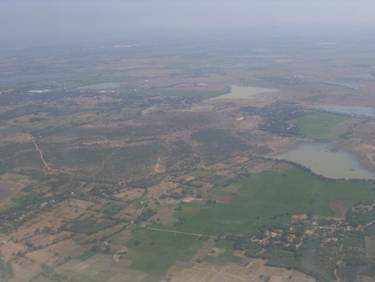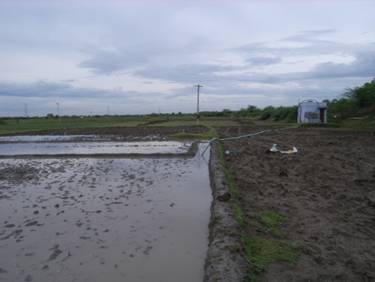Research Theme for the G-COE Program: SATO, Takahiro
Time-honored resource utilization systems in each region have been established as sustainable systems encompassing the indigenous environment, society and culture in a historical screening process. Many of the environmental problems faced today by regions with a weak humanosphere arise from the fact that the new values, systems and technologies introduced from the outside during the last several centuries have not been harmonized with the indigenous elements of those regions. In order to find a development path that can be sustainable both globally and locally in regions with such problems, we need to clarify the potential of the indigenous environment of regions and, based on such studies, analyze the problems concerning resource utilization from various perspectives.
The state of Tamil Nadu, situated on the southeastern tip of the Indian subcontinent, is a semiarid area with annual precipitation of around 700-1000 mm in much of its territory. A traditional technology using irrigation ponds was developed long ago in order to utilize local concentrations of rain water as irrigation water in a stable way. However, frequent maintenance work is needed to make possible the utilization of irrigation ponds using overland flow water. One of the factors that led to the establishment of this traditional technology is the existence of a management system called ”kudimaramathu,” based on the village social structure. The land system established during British colonial rule from the 19th century introduced capitalism into the livelihood structure, and the introduction of high-yield varieties and the expansion of cash crops in recent years have led to increasing water demand and the expansion of the use of groundwater. These extrinsic changes have not been harmonized with the scarcity of water resources in the region, leading to a tight water demand situation. Looking further at changes that have the potential to affect the water resources utilization in the region in the future, we can cite changes in precipitation caused by global warming and the expansion of acreage dedicated to energy crops. What kind of approach will be required to construct a sustainable humanosphere development path for this region?
First, more than 50% of the population of the region is engaged in agriculture in one form or another, so it can be said that the key to sustainable development lies in the water resources. However, since the water circulation structure of the catchment area that forms the basis for the preservation of the water circulation/management has yet to be elucidated, we cannot state with certainty that systematic water utilization is being carried out. In order to find a sustainable humanosphere development path for the region, data concerning the water circulation structure and water resources utilization must be collected and analyzed and the potential agricultural productivity of the water environment of the region must be elucidated. I will construct a “humanosphere data base” made up of a thematic map produced based on observational and statistical data, and elucidate, from a natural science perspective, the characteristics of the water resources that form the livelihood basis of the region.
Following that, with the aim to formulate a proposal on necessary technology and systems, I will conduct a simulation using an artificial society. I will identify the actors involved in the sustainability of water resources based on field interviews and elucidate the relationship between the actors semi-quantitatively. I will then describe the structure of water utilization of the region as an agent model and list the factors that affect the region’s water utilization, such as forecasts of changes in the climate under a global climate model and demographic changes, as a scenario for environmental change. I will analyze the process of change in the artificial society in accordance with the scenario of environmental change and examine what interventions are necessary to prevent system failure.
As stated above, I would like to produce a paradigm for a sustainable humanosphere through an area informatics approach through the construction and analysis of a humanosphere data base and a simulation of an artificial society.

Photograph 1: Aerial view of irrigation ponds

Photograph 2: Groundwater utilization in an area benefiting from an irrigation pond